White pus on tongue. White Tongue: Causes, Symptoms, and Treatment Options for Oral Health
What causes white patches on the tongue. How to identify different tongue conditions. When to seek medical attention for tongue problems. What your tongue’s appearance reveals about overall health. How to maintain proper oral hygiene for a healthy tongue.
Understanding White Patches and Pus on the Tongue
The appearance of white patches or pus on the tongue can be concerning for many individuals. These symptoms may indicate various underlying conditions, ranging from harmless to potentially serious. Understanding the causes and implications of these tongue abnormalities is crucial for maintaining oral and overall health.
Common Causes of White Tongue
Several factors can contribute to the development of white patches or a coated appearance on the tongue:
- Poor oral hygiene
- Dehydration
- Smoking or excessive alcohol consumption
- Dry mouth (xerostomia)
- Certain medications
- Oral thrush (candidiasis)
- Leukoplakia
- Oral lichen planus
Is oral thrush a common cause of white tongue? Oral thrush, a fungal infection caused by Candida albicans, is indeed a frequent culprit behind white patches on the tongue. This condition often occurs when the balance of bacteria in the mouth is disrupted, such as after taking antibiotics or in individuals with weakened immune systems.
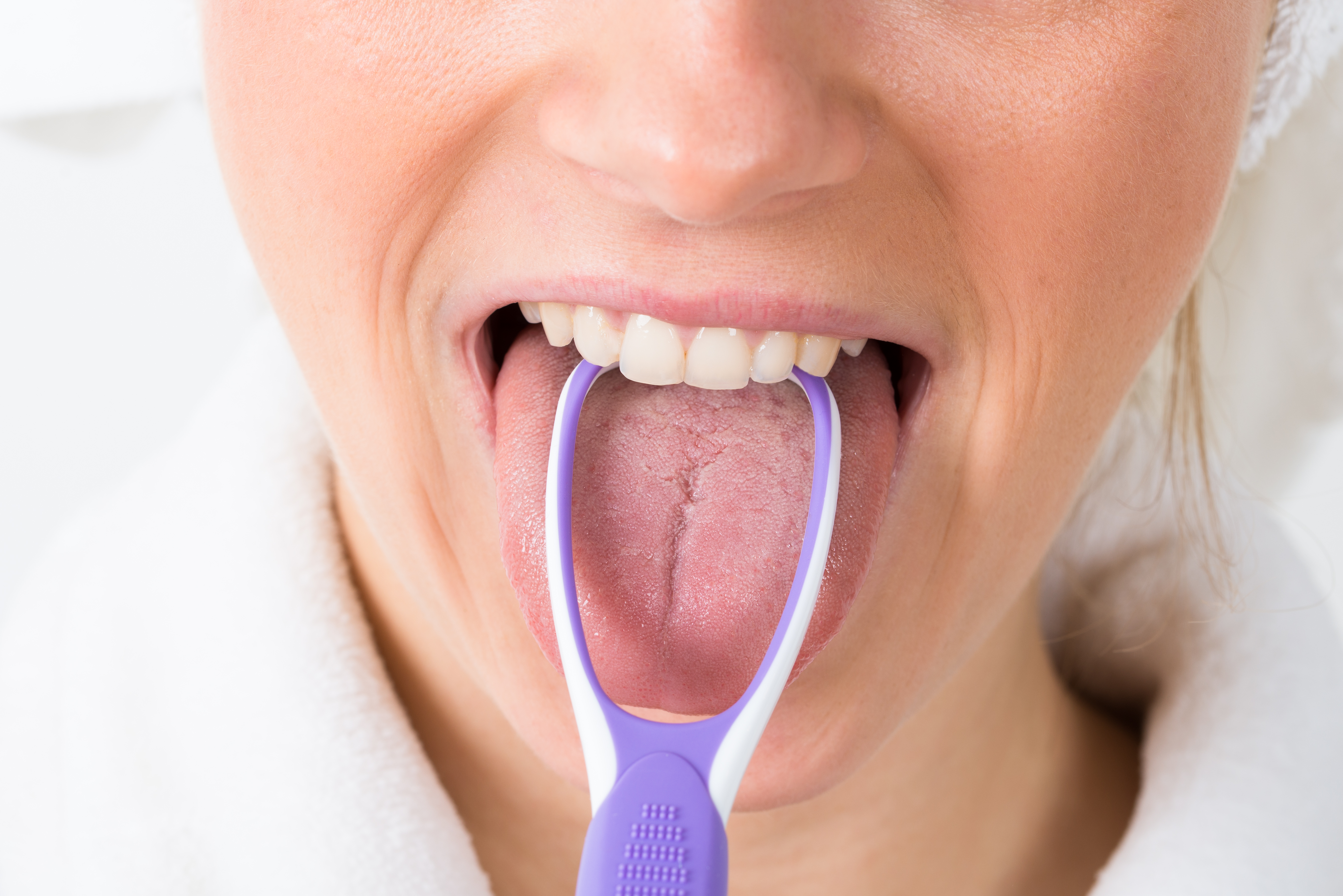
Distinguishing Between Different Tongue Conditions
Identifying the specific condition affecting your tongue is essential for proper treatment. Here are some key characteristics to help differentiate between common tongue issues:
Oral Thrush
Oral thrush typically presents as creamy white lesions on the tongue, inner cheeks, and sometimes the gums. These patches can be scraped off, often revealing a red, irritated surface underneath.
Leukoplakia
Leukoplakia appears as thick, white patches that cannot be scraped off. These lesions are often associated with tobacco use and may be precancerous in some cases.
Oral Lichen Planus
This condition manifests as lacy, white patches on the tongue and inner cheeks. It is an autoimmune disorder that can cause discomfort and may require long-term management.
The Role of Oral Hygiene in Preventing White Tongue
Maintaining proper oral hygiene is crucial in preventing the development of white tongue and other oral health issues. How can you improve your oral hygiene routine to prevent white tongue? Consider implementing the following practices:
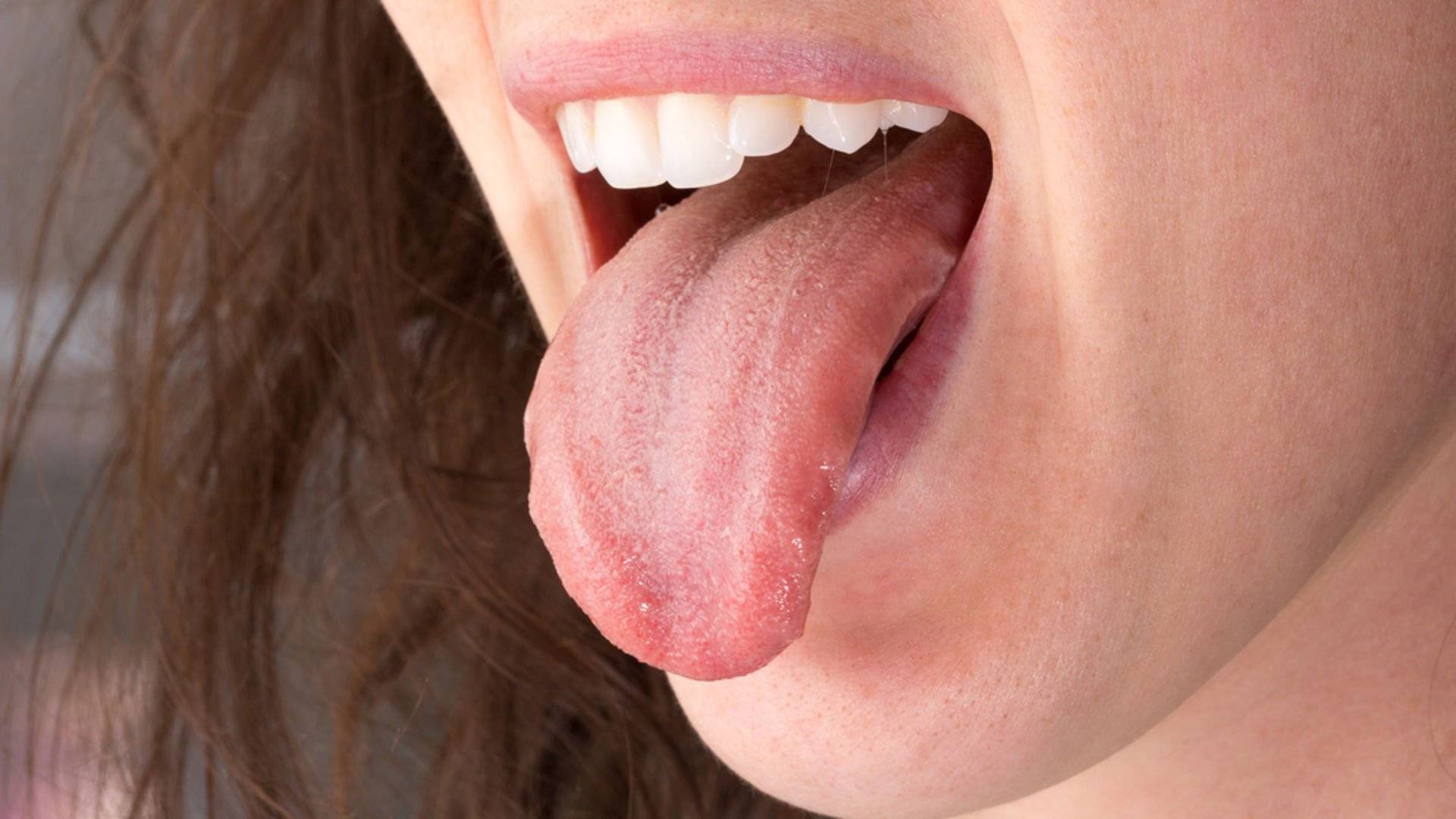
- Brush your teeth at least twice daily with fluoride toothpaste
- Use a tongue scraper or brush to clean your tongue gently
- Floss daily to remove food particles and plaque between teeth
- Rinse with an alcohol-free mouthwash
- Stay hydrated by drinking plenty of water throughout the day
- Avoid tobacco products and limit alcohol consumption
Can tongue scraping effectively remove white patches? While tongue scraping can help remove debris and bacteria from the tongue’s surface, it may not completely eliminate persistent white patches caused by underlying conditions. If white patches persist despite improved oral hygiene, consult a healthcare professional for proper diagnosis and treatment.
When to Seek Medical Attention for Tongue Problems
While many tongue issues are harmless and resolve on their own, certain symptoms warrant medical attention. Consult a healthcare provider if you experience:
- Persistent white patches that don’t improve with improved oral hygiene
- Pain or discomfort in the tongue or mouth
- Difficulty swallowing or speaking
- Unexplained lumps or growths on the tongue
- Bleeding or sores that don’t heal within two weeks
- Changes in taste or sensation in the tongue
How long should you wait before seeking medical attention for persistent white patches? If white patches on your tongue persist for more than two weeks despite improved oral hygiene, it’s advisable to consult a dentist or doctor for evaluation.
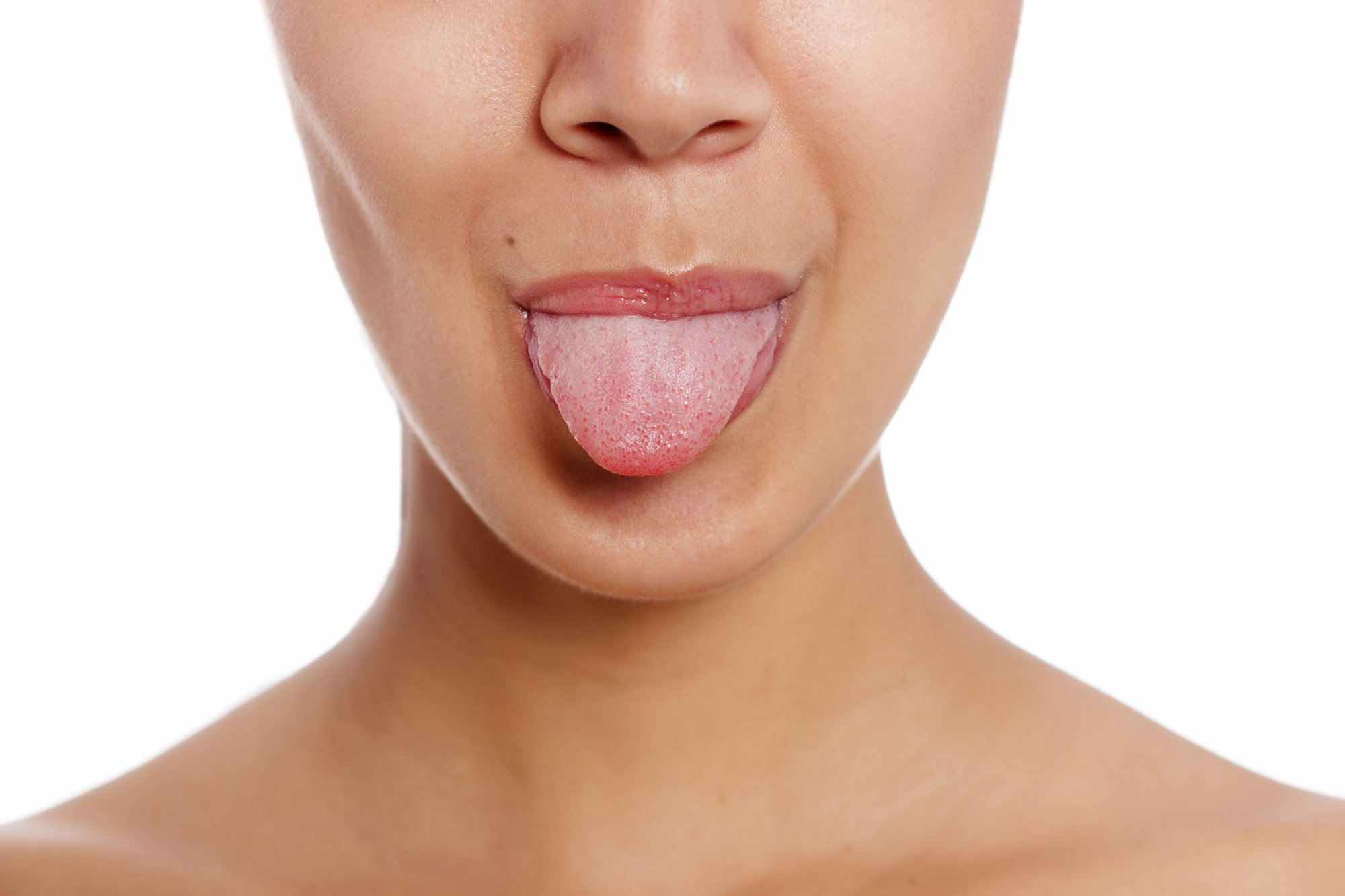
Diagnostic Approaches for Tongue Conditions
When evaluating tongue conditions, healthcare professionals may employ various diagnostic techniques to determine the underlying cause:
Visual Examination
A thorough visual inspection of the tongue and oral cavity is often the first step in diagnosis. The healthcare provider will look for characteristic signs of different conditions and assess the overall health of the mouth.
Oral Swab or Culture
In cases where a fungal or bacterial infection is suspected, a swab of the affected area may be taken for laboratory analysis. This can help identify specific pathogens and guide treatment decisions.
Biopsy
For persistent or suspicious lesions, a small tissue sample may be taken for microscopic examination. This is particularly important in ruling out precancerous or cancerous conditions.
Blood Tests
In some cases, blood tests may be ordered to check for underlying systemic conditions that could be contributing to tongue problems, such as nutritional deficiencies or autoimmune disorders.
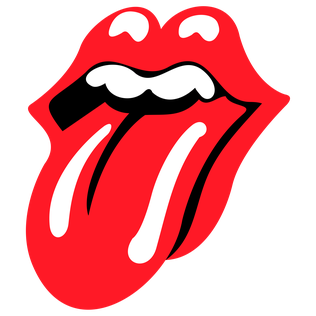
Are biopsies always necessary for diagnosing tongue conditions? Biopsies are not always required for diagnosing tongue conditions. Many issues can be identified through visual examination and patient history. However, biopsies may be recommended for persistent or suspicious lesions to rule out more serious conditions like oral cancer.
Treatment Options for White Tongue and Related Conditions
The treatment for white tongue and associated conditions depends on the underlying cause. Here are some common approaches:
Improved Oral Hygiene
For mild cases of white tongue caused by poor oral hygiene, implementing a thorough oral care routine may be sufficient to resolve the issue.
Antifungal Medications
For oral thrush, antifungal medications such as nystatin or fluconazole may be prescribed. These can be in the form of lozenges, mouthwashes, or oral tablets.
Corticosteroids
Conditions like oral lichen planus may be treated with topical or systemic corticosteroids to reduce inflammation and alleviate symptoms.

Lifestyle Changes
Quitting smoking, reducing alcohol consumption, and addressing underlying health issues can contribute to the resolution of certain tongue conditions.
Nutritional Supplements
In cases where nutritional deficiencies are contributing to tongue problems, supplements may be recommended to address specific deficiencies.
How effective are over-the-counter treatments for white tongue? Over-the-counter treatments, such as antiseptic mouthwashes or tongue scrapers, can be helpful for mild cases of white tongue caused by poor oral hygiene. However, for persistent or more severe conditions, professional medical advice and prescription treatments may be necessary for effective resolution.
The Connection Between Tongue Health and Overall Well-being
The condition of your tongue can often provide valuable insights into your overall health. Various systemic health issues may manifest as changes in the tongue’s appearance or texture:
Nutritional Deficiencies
A smooth, glossy red tongue may indicate deficiencies in vitamins such as B12, folate, or iron. Addressing these nutritional imbalances can often resolve tongue symptoms.

Autoimmune Disorders
Conditions like Sjögren’s syndrome or lupus may cause tongue-related symptoms, including dryness, soreness, or changes in taste sensation.
Diabetes
Uncontrolled diabetes can lead to oral health issues, including an increased risk of oral thrush and other fungal infections affecting the tongue.
Gastrointestinal Problems
Conditions such as acid reflux or inflammatory bowel disease may contribute to tongue discomfort or changes in appearance.
Can tongue appearance indicate underlying health problems? Yes, the appearance of your tongue can often provide clues about your overall health. Changes in color, texture, or the presence of unusual growths or patterns on the tongue may signal underlying health issues that warrant further investigation by a healthcare professional.
Maintaining Long-term Tongue and Oral Health
Preserving the health of your tongue and overall oral cavity requires ongoing attention and care. Here are some strategies for maintaining optimal tongue and oral health:

Regular Dental Check-ups
Schedule routine dental examinations and cleanings to detect and address any oral health issues early on.
Balanced Diet
Consume a nutritious diet rich in vitamins and minerals to support overall oral health and prevent nutritional deficiencies that can affect the tongue.
Proper Hydration
Drink plenty of water throughout the day to maintain adequate saliva production and prevent dry mouth, which can contribute to tongue problems.
Stress Management
Practice stress-reduction techniques, as stress can impact oral health and potentially exacerbate certain tongue conditions.
Avoid Irritants
Minimize consumption of foods and beverages that may irritate the tongue, such as spicy or acidic items, especially if you’re prone to tongue sensitivity.
How often should you perform a self-examination of your tongue? It’s advisable to inspect your tongue regularly, ideally as part of your daily oral hygiene routine. Look for any changes in color, texture, or the presence of unusual spots or growths. If you notice any persistent changes or concerns, consult with a dental or medical professional for evaluation.

By understanding the various factors that can affect tongue health and implementing proper oral care practices, you can maintain a healthy tongue and potentially identify early signs of underlying health issues. Remember that while many tongue conditions are benign and easily treatable, persistent or concerning symptoms should always be evaluated by a healthcare professional to ensure proper diagnosis and management.
What Your Tongue Says About Your Health
Medically Reviewed by Evan Frisbee, DMD on November 04, 2021
Bumps, patches, and spots in your mouth can be harmless. But sometimes, they can give clues to what’s going on with your overall health. Infections, stress, medication issues, and even aging can make their marks on your tongue. Find out what your tongue is telling you and when you should see your doctor or dentist.
Creamy white spots could be thrush, a fungal infection (shown here). It often happens after an illness or medications throw off the balance of bacteria in your mouth. White patches that look lacy could be lichen planus, which means your immune system is attacking the tissues in your mouth. If you see hard, flat, white areas that can’t be scraped away, it could be leukoplakia, which is linked to cancer. Let your dentist know about any white patches you see.
If your tongue has a coating that looks like black, brown, or white fur, you might have hairy tongue. Those “hairs” are proteins that turn normal, small bumps into longer strands, where food and bacteria get caught. It should go away when you brush or scrape your tongue. If you have hairy, white patches that you can’t scrape off, it might be oral hairy leukoplakia. It can happen to people infected with viruses like Epstein-Barr or HIV.
Those “hairs” are proteins that turn normal, small bumps into longer strands, where food and bacteria get caught. It should go away when you brush or scrape your tongue. If you have hairy, white patches that you can’t scrape off, it might be oral hairy leukoplakia. It can happen to people infected with viruses like Epstein-Barr or HIV.
Hairy tongue can be black in color. But your tongue can also go dark after you take an antacid with an ingredient called bismuth. For some people, it stains the tongue black when it mixes with saliva. It’s harmless and goes away once you stop taking the medicine.
A strawberry-red tongue could be an early sign of Kawasaki disease, a rare, serious illness that inflames blood vessels all over the body, most often in children. It’s also a symptom of scarlet fever. If your red tongue is also smooth and you have pain in your mouth, it might be a sign that your body doesn’t have enough vitamin B3.
If your tongue feels like you scalded it with hot coffee and tastes metallic or bitter, you may have burning mouth syndrome. It might mean a problem with the nerves in your tongue. Some health problems, like dry mouth, infections, acid reflux, and diabetes may cause it, too. For some people, acidic foods like pineapple as well as toothpaste, mouthwash, candy, or gum also make their mouth burn.
It might mean a problem with the nerves in your tongue. Some health problems, like dry mouth, infections, acid reflux, and diabetes may cause it, too. For some people, acidic foods like pineapple as well as toothpaste, mouthwash, candy, or gum also make their mouth burn.
A tongue without any small bumps on the top may look glossy red. You may get it if you don’t get enough of some nutrients like iron, folic acid, or B vitamins. Infections, celiac disease, or some medications can also cause it. If you have patches of smooth areas next to bumpy ones, it could be geographic tongue. The spots can come and go, and sometimes they hurt or burn. It’s harmless, but it could be linked to psoriasis or lichen planus.
Under the tongue is a common spot for canker sores (shown here) — small, painful, reddish bumps that come and go on their own. A single, painful bump at the tip could be transient lingual papillitis, “lie bumps,” which can pop up if your tongue gets irritated. A virus can also cause lots of little bumps on the tip and sides.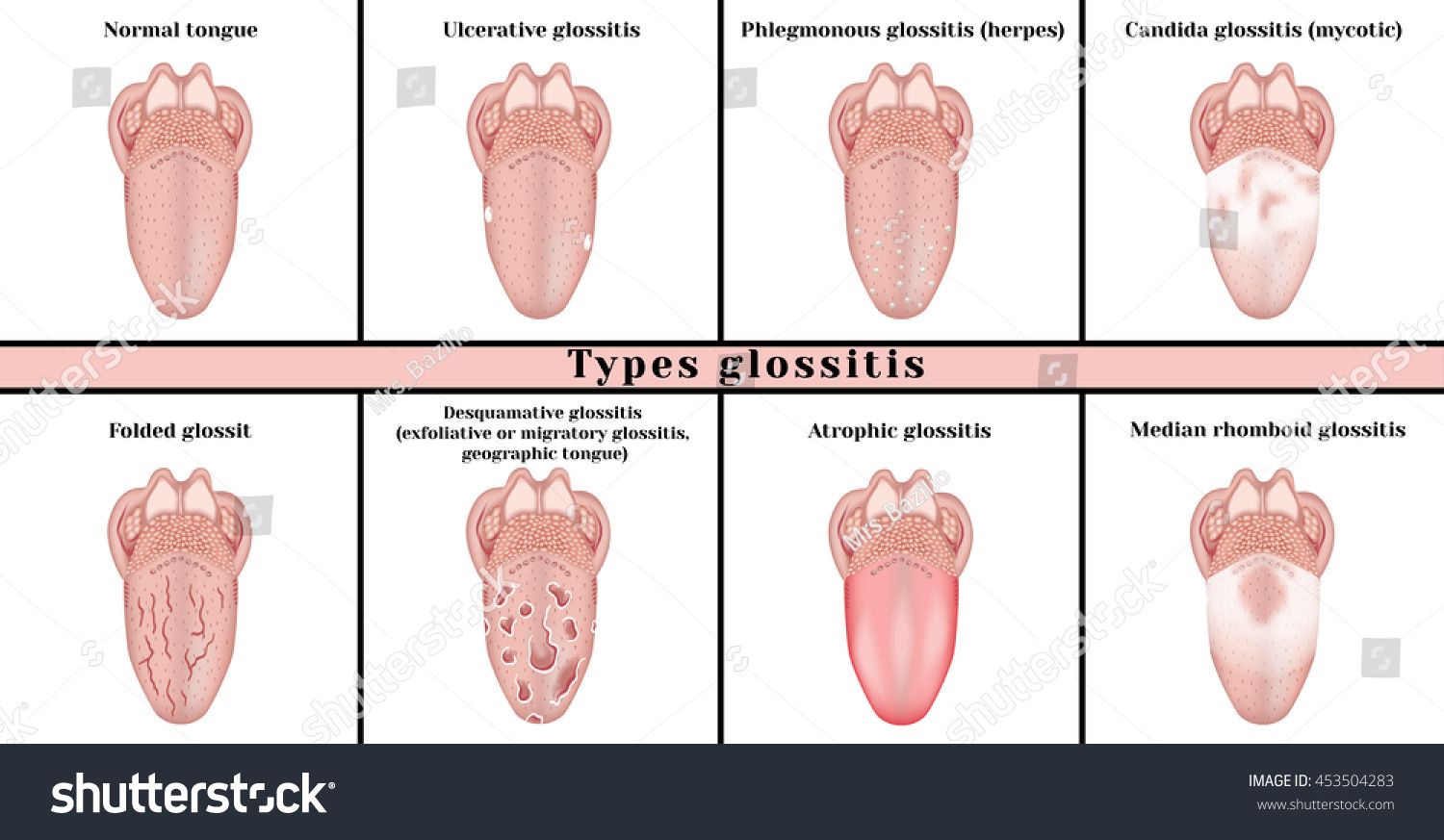 If you have a lump on or under your tongue that hurts and doesn’t go away, let your doctor or dentist know. They’ll want to check you for oral cancer.
If you have a lump on or under your tongue that hurts and doesn’t go away, let your doctor or dentist know. They’ll want to check you for oral cancer.
Your tongue has lots of nerve endings, so it can really hurt if you bite or injure it. Canker sores, lichen planus (shown here), thrush, and geographic tongue can cause pain. Some medications and infections can make your tongue sore, too. Sometimes pain in your tongue can be a sign of cancer, especially if you also have a lump or red or white patches. Bring those problems up with your doctor or dentist.
It’s when your tongue is too big compared to the rest of your mouth. It can take up so much room that your doctor might find imprints of your teeth on its sides. Your doctor will try to figure out and treat the underlying condition, which may be hypothyroidism, an infection, or allergies, among others.
Deep grooves can form on your tongue as you age. They also are linked to Down syndrome, psoriasis, and Sjögren’s syndrome. They’re harmless, but you should gently brush your tongue to clear food and bacteria. The grooves might get better when your doctor treats the condition that’s causing them, if there is one.
They’re harmless, but you should gently brush your tongue to clear food and bacteria. The grooves might get better when your doctor treats the condition that’s causing them, if there is one.
Many spots, bumps, and colors on your tongue are harmless. But it’s good to know the signs that might point to cancer: Sores that don’t heal, lumps, tongue pain, and trouble chewing or swallowing. If these symptoms last more than 2 weeks, see your doctor or dentist.
IMAGES PROVIDED BY:
1) Thinkstock
2) Medical Images
3) Science Source
4) Medical Images
5) Medical Images
6) Thinkstock
7) Medical Images
8) Getty
9) Getty
10) Thinkstock
11) Thinkstock
12) Medical Images
SOURCES:
American Academy of Oral Medicine: “Hairy Tongue.”
American Family Physician: “Common Tongue Conditions in Primary Care.”
American Academy of Family Physicians: “Canker Sores.”
Canadian Cancer Society: “Signs and symptoms of oral cavity cancer. ”
”
Cancer Research UK: “About tongue cancer.”
Cleveland Clinic: “Burning Mouth.”
DermNet New Zealand: “Transient lingual papillitis.”
Mayo Clinic: “Canker Sores,” “Leukoplakia,” “Oral lichen planus,” “Geographic Tongue,” “Oral Thrush,” “Mouth Cancer.”
Merck Manual: “Tongue Discoloration,” “Tongue Injury,” “Kawasaki Disease.”
NHS: “Sore or painful tongue.”
UpToDate: “Patient education: Intravenous immune globulin (IVIG) (Beyond the Basics).”
© 2021 WebMD, LLC. All rights reserved. View privacy policy and trust info
White Spots on Tongue – Causes, Symptoms & Treatment
White Spots on Tongue
White spots or patches may appear on your tongue as a symptom of several conditions. They are generally benign, but knowing the possible causes will help you determine when to contact a doctor.
5 Causes of White Spots on Tongue
Here are the most common causes of white spots on the tongue:
1. Oral Thrush
Oral thrush is a fungal infection caused by Candida yeast.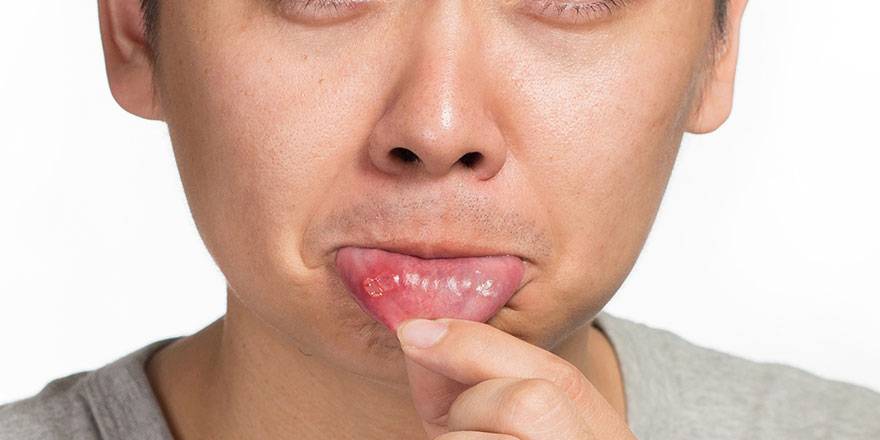 It often appears as white patches on the tongue, mouth, and throat and is typically harmless.
It often appears as white patches on the tongue, mouth, and throat and is typically harmless.
Risk Factors
Oral thrush is most common in babies. Healthy adults don’t often develop it, but factors that increase the risk include:1
- Wearing dentures
- Having diabetes, cancer, or HIV/AIDS (or another condition that causes a weakened immune system)
- Taking certain antibiotics or corticosteroids, including inhalers for asthma
- Taking medications or other conditions that cause dry mouth
- Smoking
Other Symptoms
The white patches may be small and spotty or coat a significant portion of the tongue.
Other symptoms of oral thrush include:
- Redness or soreness in the mouth
- Cracking at the corners of the mouth
- A lack of taste or bad taste
- Pain while eating or drinking
- A feeling of “cotton” in the mouth
Babies with oral thrush may not want to feed and can develop a rash elsewhere on their bodies. 2
2
Treatment
Treatment usually involves an antifungal medication. The medicine is applied topically for a course of 1 to 2 weeks.
Fluconazole may be taken orally or by injection for more severe infections.
2. Leukoplakia
In leukoplakia, thick, white patches form on the gums, tongue, and inside of your mouth. These patches cannot be wiped off. Most instances are benign, but some can be precancerous.
The exact causes are unknown, but leukoplakia has been associated with tobacco use. Chronic irritation from sharp teeth or dentures may also play a role.
Risk Factors
Using tobacco in any form puts you at a much higher risk of developing leukoplakia. You may also increase your chances if you drink alcohol.
Between 1 and 9% of people with leukoplakia will develop mouth cancer or malignancy in the future, with an increased incidence in women.3 Signs that the lesion may be at risk of being precancerous or cancerous include:
- Having leukoplakia for an extended amount of time (> 2 weeks)
- Lesions on the tongue or bottom of the mouth
- Lesion size greater than 200 mm
- Changes in appearance over time
Other Symptoms
You might notice symptoms other than the lesions, including:
- Red patches in the mouth, which may indicate precancerous changes
- Pain when swallowing
- Difficulty opening your mouth
If you notice any of these symptoms, see a doctor immediately.
Treatment
Discontinuing unhealthy habits that irritate the mouth, such as using tobacco or drinking alcohol, can resolve the issue for most people.
In more severe cases, your doctor may remove the patches with a scalpel and biopsy the tissue, and you may need routine follow-ups.
3. Oral Lichen Planus
Oral lichen planus is a common inflammatory condition affecting the mouth’s mucous membranes. Lacy white patches occur on the tongue and other soft tissues in the oral cavity.
Possible causes include:
- Hepatitis C
- Medications
- Reactions to metal fillings
- An autoimmune reaction
The disease is not contagious. However, studies have shown that oral lichen planus can undergo malignant transformation, so routine follow-ups are needed to monitor for changes.
Risk Factors
Women are twice as likely as men to develop oral lichen planus.4 It’s most commonly found in middle-aged adults; it’s unlikely to affect young children or older people.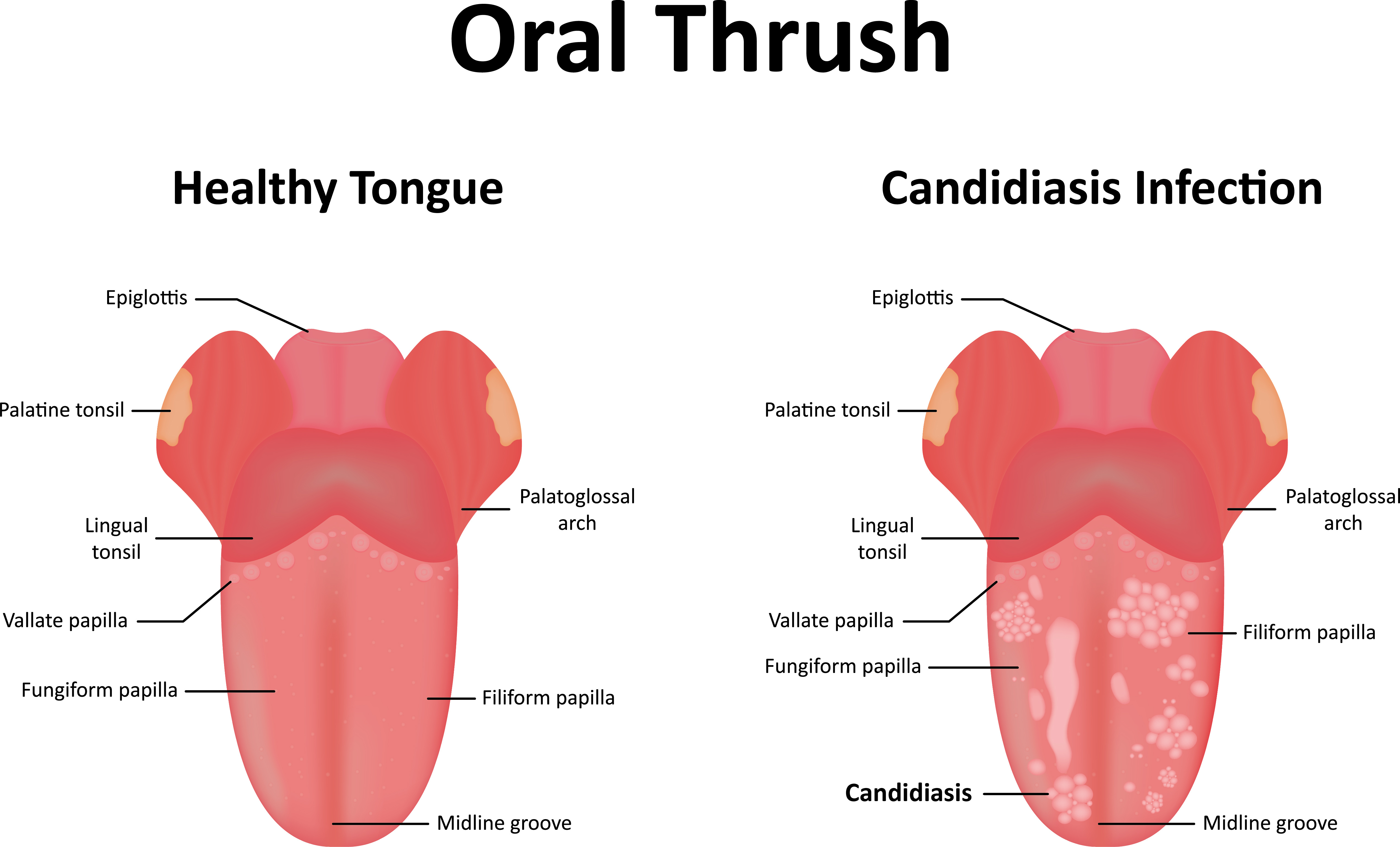
Other Symptoms
Some people may develop redness and sores in their mouths. You may also notice lichen planus on other parts of your skin.
Treatment
There is no cure for oral lichen planus. However, some treatments, including corticosteroids or immune response medicines, may ease symptoms.
4. Syphilis
Syphilis is a sexually transmitted bacterial infection. It can occur in the mouth as a result of oral sex.
Bacteria enter the body through a cut in the mouth and create a chancre, or a sore, at the entry point. These chancres can be found on the tongue, lip, or inside of the mouth.
Chancres can resemble pimples or other conditions, which can delay diagnosis. One study showed that it took nearly 9 months for people with only oral symptoms to be diagnosed with syphilis.5
Risk Factors
Engaging in unprotected oral sex makes you much more likely to develop oral syphilis. Using a condom or protective barrier can prevent oral sexually transmitted infections (STIs).
Poor oral hygiene can also make your mouth more vulnerable to bacteria.
Other Symptoms
Syphilis symptoms depend on the stage of the infection:
- Primary syphilis – chancres in the mouth
- Secondary syphilis – skin rashes, swollen lymph nodes, fever, sore throat, larger mouth sores, headaches, weight loss
- Late syphilis – severe issues such as organ failure
These stages can happen in a different order for different people. Some people may only experience some of these symptoms.
Treatment
Oral syphilis is highly treatable if you catch it early. Antibiotics are the most common treatment, administered by injection.
The chancres may go away on their own, but that doesn’t mean the infection has. Seeking treatment is vital to avoid lasting consequences.
5. Mouth Ulcers
Mouth ulcers, also known as canker sores, are painful lesions that can occur for a variety of reasons. They are most common on the tissues surrounding the teeth, but they can also occur on the tongue.
They are most common on the tissues surrounding the teeth, but they can also occur on the tongue.
Many things can cause a mouth ulcer to form, including:
- Injury to the inside of the mouth
- Bacterial, viral, or fungal infection
- Food sensitivities or allergies
- Hormonal changes
- Stress and lack of sleep
- Cancer
Ulcers are not contagious and typically heal on their own after 1 to 2 weeks. If you have an ulcer that is not healing after two weeks, seek care from a dentist or doctor as soon as you can.
Risk Factors
You may be more prone to developing canker sores if you have one or more of the following:
- Autoimmune disease
- Vitamin deficiencies
- Health conditions such as Celiac disease
- Braces or dentures that irritate your mouth
- Mouth cancer
Maintaining a balanced diet, practicing good oral hygiene, and using stress management skills can help prevent mouth ulcers from developing.
Other Symptoms
In addition to the sores themselves, you may also notice the following symptoms:
- Swollen skin around the sores
- Trouble chewing or brushing teeth
- Irritation from salty, spicy, or hot foods
- Appetite loss
Treatment
Most canker sores will resolve independently. Some may need treatment to prevent complications and relieve symptoms as they heal.
Treatment involves using an antiseptic gel, keeping your mouth clean, and avoiding certain foods. Some severe cases may require immunosuppressant medication.
When to See a Dentist or Doctor
Contact a healthcare professional if you experience:
- Excessive white spots or patches that don’t resolve after a week or two
- Pain eating, swallowing, or opening your mouth
- Redness, soreness, or pus
- Fever
- Skin rashes
- Bleeding in the mouth
- Ear pain while swallowing
Your doctor can conduct a full examination and run tests if needed.
Diagnosis
The method of diagnosis will vary depending on the condition your doctor suspects. They may perform a biopsy, run blood tests, or examine your mouth.
Determining Treatment
Your diagnosis will determine your treatment. Habit change and practicing better oral hygiene can resolve some issues entirely.
Other conditions may have no cure, but their symptoms may be treatable using topical gels, oral medications, or injections.
Outlook
Most causes of white patches are benign. Generally, they will resolve on their own or can be treated by a healthcare professional.
Some underlying conditions may have the potential to become precancerous. Mouth cancer can occur at any age, with 20% of all cases appearing in adults under 55.6
Catching any issues early can improve your outlook.
Preventing White Patches on Tongue
The best way to prevent issues with your tongue is to practice excellent oral hygiene. Medical professionals suggest:
- Brushing and flossing daily
- Maintaining a healthy diet
- Reducing tobacco and alcohol use
- Visiting your dentist and doctor regularly
These tips can help prevent complications in the future.
Summary
White spots on your tongue are a common symptom of many conditions. They are usually benign, non-contagious, and treatable. However, they can sometimes indicate a more severe condition, so it’s important to visit your doctor early.
In this article
What to do if a white spot appears on the tongue
The state of the tongue can be used to judge the health of many internal organs of a person. Changes in its color and structure, plaque or spots indicate a malfunction in the body. How the tongue normally looks, what causes white spots and when to see a doctor – in this article.
What a healthy tongue looks like
When a person is healthy, his tongue is even, soft, pale pink in color. Movement does not cause discomfort. The papillae on the tongue are not smoothed: small at the tip, closer to the middle – larger. Plaque – white in a small amount, easily removed with a toothbrush. Taste sensations are not disturbed [1] .
In order not to miss the development of unpleasant diseases, regularly conduct an independent examination of the tongue.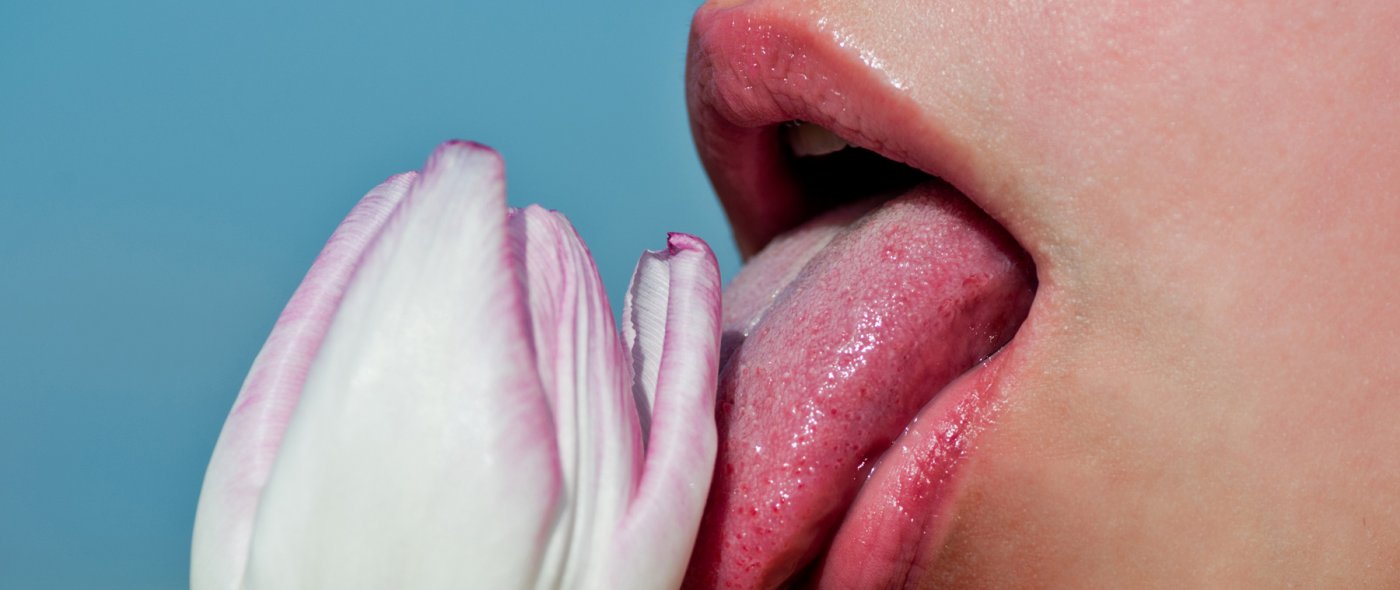 To do this, follow a few rules:
To do this, follow a few rules:
Examine the tongue in the morning before brushing your teeth.
Use natural light.
Do not strain your protruding tongue.
Keep in mind what you ate the day before. For example, beets or blueberries stain the tongue.
You can comprehensively assess the state of the language by honestly answering a number of questions:
The color of the tongue.
How smooth it is.
Is there any plaque, what color and density.
Is the language homogeneous in its structure.
Have teeth been imprinted on the tongue.
Cracks in the tongue, sores, sores.
Do you have bad breath.
Causes of white spots
Harmless causes of white spots on the tongue can be dehydration, smoking, poor diet, poor hygiene, taking certain medications. But behind this symptom, unpleasant diseases can also be hidden, such as stomatitis, leukoplakia, lichen planus, disorders in the digestive tract [2] .
But behind this symptom, unpleasant diseases can also be hidden, such as stomatitis, leukoplakia, lichen planus, disorders in the digestive tract [2] .
1. Candidal stomatitis – inflammation of the oral cavity, which is caused by the fungus Candida. White spots are located on the tongue, cheeks, or completely cover the entire mucous membrane up to the throat and tonsils. There is also a feeling of dryness and burning. The disease is not dangerous, but requires treatment.
Stomatitis occurs due to prolonged use of antibiotics, metabolic disorders. Infection is also possible through objects, products or from another person. Predisposing factors include alcohol use, smoking, dentures, high carbohydrate diet, poor oral hygiene [3] .
2. Leukoplakia are white patches or plaques that are not scraped off during examination. Most often located on the mucous membrane of the cheeks along the line of closing of the teeth, they can occur on the back or lateral surfaces of the tongue, on the lips.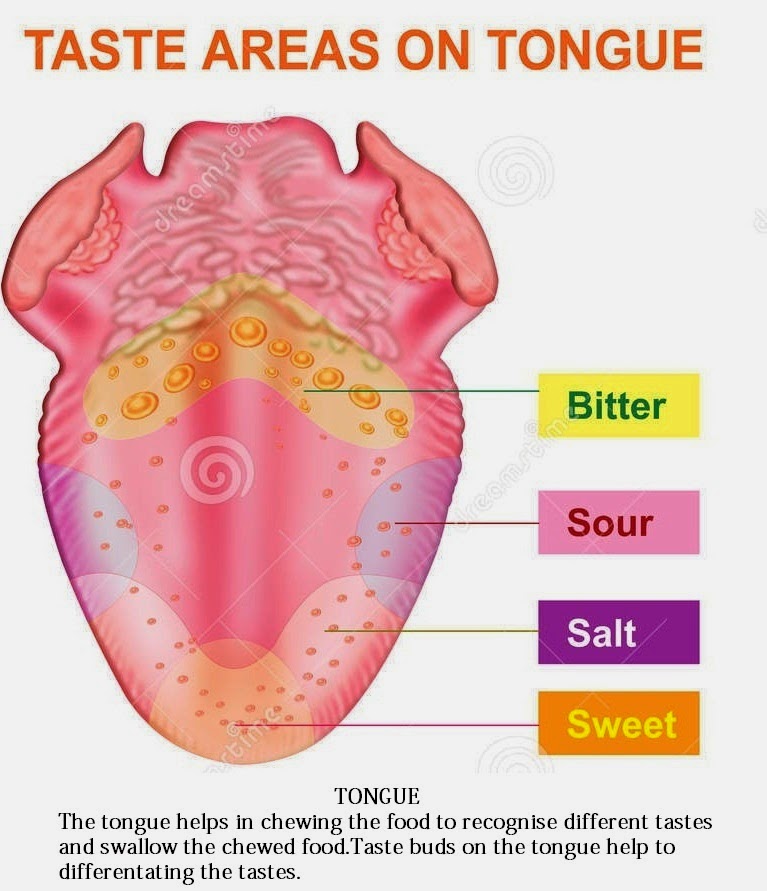 Tobacco is a common cause of leukoplakia. It has a traumatic thermal and chemical effect on the mucous membrane. Sometimes leukoplakia appears due to an allergy to materials used in restoration and prosthetics of the teeth [4] .
Tobacco is a common cause of leukoplakia. It has a traumatic thermal and chemical effect on the mucous membrane. Sometimes leukoplakia appears due to an allergy to materials used in restoration and prosthetics of the teeth [4] .
3. Lichen planus is a chronic inflammatory disease that targets mucous membranes, skin, and, more rarely, nails and hair. You can find white spots on the tongue, on the surfaces of the cheeks, gums. Usually they are not painful, in some cases redness and rare blistering are noted. Most often, the disease occurs in women aged 40 to 65 years [5] . The cause of lichen planus in the mouth is rarely known. The disease may indicate a weakening of the human immune system. It is not contagious and is not inherited.
4. Diseases of the gastrointestinal tract. One of the causes of stomach diseases is the microorganism Helicobacter pylori. Its vigorous activity leads to stomach ulcers, duodenal ulcers, cancers and tumors of the digestive system. The gastrointestinal tract and tongue are closely related. Studies show that spots on the tongue, changes in its color and relief, the appearance of plaque and cracks may indicate diseases of the gastrointestinal tract.
The gastrointestinal tract and tongue are closely related. Studies show that spots on the tongue, changes in its color and relief, the appearance of plaque and cracks may indicate diseases of the gastrointestinal tract.
When to see a doctor
Visit your dentist if stains do not go away within a week. White dots, fissures, ulcers and leukoplakia can cause oral cancer. In this case, the sooner a dangerous disease is recognized, the more favorable the outcome awaits the patient [6] .
“According to the WHO, in the Russian Federation alone in 2015, 589,341 cases of malignant neoplasms were detected (including 270,046 and 319,335 in male and female patients, respectively). The increase in this indicator compared to 2014 was 4.0%, and these figures are growing.”
Prevention of oral diseases
To avoid the multiplication of pathogens, follow these simple recommendations:
Carefully monitor oral hygiene.
 Use a toothbrush with a special surface to clean your tongue. To get rid of food debris, rinse your mouth with water after eating. Do not neglect brushing your teeth before going to bed, otherwise the bacteria accumulated during the day will actively multiply, provoking the appearance of plaque.
Use a toothbrush with a special surface to clean your tongue. To get rid of food debris, rinse your mouth with water after eating. Do not neglect brushing your teeth before going to bed, otherwise the bacteria accumulated during the day will actively multiply, provoking the appearance of plaque.Eat right. Too spicy and hot food injures the mouth and tongue. Eat more vegetables and fruits and less processed foods to get the most nutrients, vitamins and minerals.
Give up bad habits. These include not only smoking and alcohol – you should also not bite your nails and pencils, eat poorly washed vegetables, brush your teeth with objects that are not suitable for this. All this increases the chances of infection.
See your dentist regularly. Preventive examinations will help to identify any disease at an early stage and start treatment in a timely manner.
List of sources:
The oral cavity is a mirror of diseases of internal organs.
 Bavykina T. Yu., Efremova O. A. // URL: https://cyberleninka.ru/article/n/polost-rta-zerkalo-zabolevaniy-vnutrennih-organov (date of access: 10/15/2020).
Bavykina T. Yu., Efremova O. A. // URL: https://cyberleninka.ru/article/n/polost-rta-zerkalo-zabolevaniy-vnutrennih-organov (date of access: 10/15/2020).Diseases of the oral mucosa. Danilevsky N. F., Leontiev V. K., Nesin A. F., Rakhniy Zh. I. // URL: http://stgmu.ru/userfiles/depts/therapeutic_dentistry/Obyavleniya/Zabolevania_slizistoy_obolochki_polosti_rta.pdf October 15, 2020).
Clinical aspects of candidiasis of the oral mucosa. Boyko-Maksimova G.I., Paliy L.I. // URL: https://cyberleninka.ru/article/n/klinicheskie-aspekty-kandidoza-slizistoy-obolochki-polosti-rta (Accessed: 10/15/2020) .).
Clinical aspects of leukoplakia of the oral mucosa. Latysheva S. V., Budevskaya T. V. // URL: https://cyberleninka.ru/article/n/klinicheskie-aspekty-leykoplakii-slizistoy-obolochki-rta (date of access: 10/15/2020).
Features of the state of the oral mucosa in patients with lichen planus.
 Silin D.S., Konoplya A.I., Tishkov D.S. // URL: https://cyberleninka.ru/article/n/osobennosti-sostoyaniya-slizistoy-obolochki-polosti-rta-u-bolnyh-krasnym -ploskim-lishaem (date of access: 10/15/2020).
Silin D.S., Konoplya A.I., Tishkov D.S. // URL: https://cyberleninka.ru/article/n/osobennosti-sostoyaniya-slizistoy-obolochki-polosti-rta-u-bolnyh-krasnym -ploskim-lishaem (date of access: 10/15/2020).Types of malignant neoplasms of the maxillofacial region and modern methods of their treatment, Mikhalchenko D. V., Zhidovinov A. V. // URL: https://www.science-education.ru/ru/article/view?id= 25734 (date of access: 10/15/2020).
Glossitis – inflammation of the tongue, manifested as a result of injury, exposure to pathogenic microorganisms or other diseases
Glossitis is an inflammation of the tongue that manifests itself as a result of an injury, exposure to pathogenic microorganisms or other diseases. This term can refer to systematic changes in the tongue (avitaminosis, pernicious anemia, acute infections and some dermatoses) and anomalies in its structure (folded, diamond-shaped tongue, and others).
What causes glossitis?
The causes of glossitis are varied – it can be both damage to the tongue, and exposure to bacteria and viruses. In the presence of a local infection, glossitis can be caused by viruses and bacteria, including the herpes virus. The presence of burns, mechanical injuries of the oral cavity and tongue especially contribute to the development of the infectious process. Risk factors that provoke the development of glossitis include alcohol, nicotine, hot spices, and hot food. Sometimes it can even be an allergic reaction to mouthwashes and mouth fresheners, toothpaste or caramel.
In the presence of a local infection, glossitis can be caused by viruses and bacteria, including the herpes virus. The presence of burns, mechanical injuries of the oral cavity and tongue especially contribute to the development of the infectious process. Risk factors that provoke the development of glossitis include alcohol, nicotine, hot spices, and hot food. Sometimes it can even be an allergic reaction to mouthwashes and mouth fresheners, toothpaste or caramel.
Glossitis can also manifest itself in the presence of some systemic diseases, such as iron deficiency anemia, lichen planus, erythema, B-vitamin deficiency states, syphilis, aphthosis, and many others. In a rare case, the exact cause of glossitis cannot be established.
What are the symptoms of glossitis (inflammation of the tongue)?
Depending on the location and cause, different types of glossitis can be distinguished. It is worth paying attention to the most common:
Deep glossitis – the inflammatory process is located in the thickness of the tongue and manifests itself in the form of an abscess or phlegmon.
Phlegmonous glossitis – located at the bottom of the mouth and causes acute inflammation in the neck and chin.
Superficial glossitis – is an inflammation of the mucous membrane of the tongue.
Catarrhal glossitis – rather dense plaque on the tongue, sometimes leading to its swelling, compaction and limitation of mobility. There may be areas that are bright red, profuse salivation and a burning sensation in the tongue.
Ulcerative glossitis — This species is characterized by the presence of a dark gray coating on the tongue. When it is removed, rather painful bleeding erosions and ulcers become visible, and bad breath occurs.
Desquamative glossitis – is usually considered a symptom of a disorder in the functioning of certain body systems, such as metabolic disorders or damage to the stomach. It manifests itself in the form of inflammation of the mucous membrane on the back of the tongue.
Folded glossitis – is a congenital anomaly that manifests itself in the form of folds along the back of the tongue, directed in different directions. Usually does not cause complaints.
Rhomboid median glossitis – just like folded, it is a congenital disease. It is characterized by the appearance of diamond-shaped papillae on the back of the tongue back. Treatment is usually not required, only in the presence of exacerbations, in which it is recommended to excise the altered area.
Hairy black tongue – also called hairy tongue. This species is characterized by the growth and keratinization of filiform papillae. Experts cannot determine the exact cause of this disease.
Gunther’s glossitis – characteristic early sign of pernicious anemia. Patients often complain of a burning sensation of the tongue, especially in the region of its tip.
Interstitial glossitis is a form of syphilitic lesion of the tongue. In the presence of a disease, the tongue becomes almost immobile, it thickens. In the absence of timely treatment, the connective tissue completely and irreversibly replaces the muscle tissue.
Common symptoms of glossitis include such manifestations as changes in the structure or color of the tongue, an increase in its size, plaque, burning, difficulty in swallowing or chewing food, speech. If you have at least one of these symptoms, you should definitely consult an experienced doctor. Only the dentist prescribes the tests necessary for verification and determines the treatment of glossitis.
How is glossitis diagnosed?
At the first appearance of symptoms of glossitis, you need to consult a dentist. The doctor will examine the area of inflammation of the tongue, determine the absence or presence of papillomas, ask questions that help most accurately identify the causes of the infection, and prescribe the tests necessary to identify systemic diseases.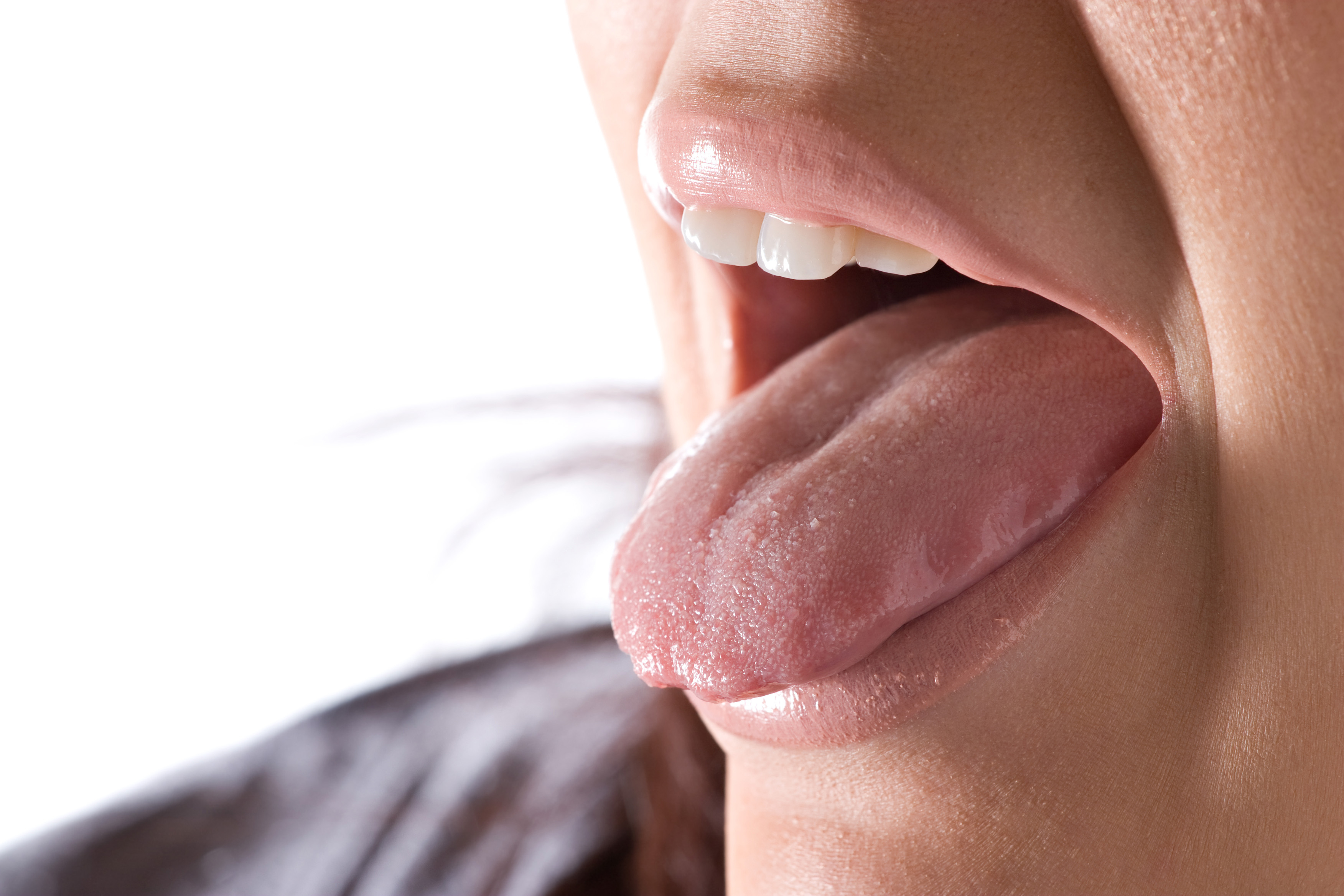
How is inflammation of the tongue (glossitis) treated?
First of all, it is required to eliminate the immediate source of infection – without this step, treatment will not make sense. For treatment, various drugs can be used – anti-inflammatory drugs, antibiotics, immunocorrectors and others. Hydrocortisone or prednisopone helps to eliminate the symptoms of inflammation. But it is worth remembering that in addition to indications for use, all drugs have contraindications, so they can only be used as directed by the attending physician.
The damaged surface of the tongue is disinfected in the form of applications, baths or rinses with antiseptic solutions – potassium permanganate, furatsilin, chlorhexidine and others. To reduce pain, the doctor may prescribe anesthetics, in some cases in combination with antiseptics – Kamistad, lidocaine. Applications with preparations of a certain group contribute to the acceleration of tissue regeneration – an oil solution or ointment with vitamin A, betacarotene, rosehip seed oil, Vinizol.

 Use a toothbrush with a special surface to clean your tongue. To get rid of food debris, rinse your mouth with water after eating. Do not neglect brushing your teeth before going to bed, otherwise the bacteria accumulated during the day will actively multiply, provoking the appearance of plaque.
Use a toothbrush with a special surface to clean your tongue. To get rid of food debris, rinse your mouth with water after eating. Do not neglect brushing your teeth before going to bed, otherwise the bacteria accumulated during the day will actively multiply, provoking the appearance of plaque. Bavykina T. Yu., Efremova O. A. // URL: https://cyberleninka.ru/article/n/polost-rta-zerkalo-zabolevaniy-vnutrennih-organov (date of access: 10/15/2020).
Bavykina T. Yu., Efremova O. A. // URL: https://cyberleninka.ru/article/n/polost-rta-zerkalo-zabolevaniy-vnutrennih-organov (date of access: 10/15/2020). Silin D.S., Konoplya A.I., Tishkov D.S. // URL: https://cyberleninka.ru/article/n/osobennosti-sostoyaniya-slizistoy-obolochki-polosti-rta-u-bolnyh-krasnym -ploskim-lishaem (date of access: 10/15/2020).
Silin D.S., Konoplya A.I., Tishkov D.S. // URL: https://cyberleninka.ru/article/n/osobennosti-sostoyaniya-slizistoy-obolochki-polosti-rta-u-bolnyh-krasnym -ploskim-lishaem (date of access: 10/15/2020).